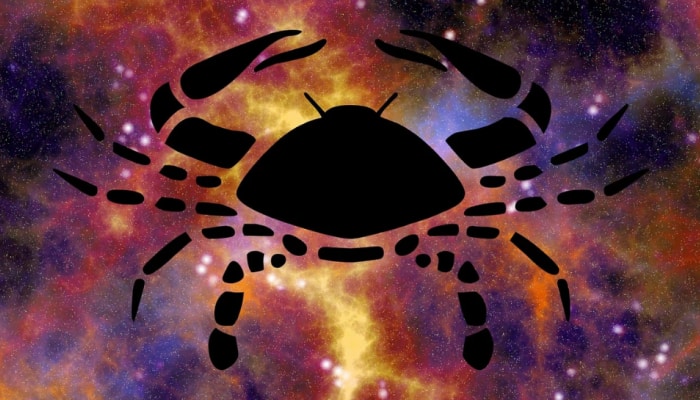The most satisfying feeling is to see your disciples doing well: Kathak dancer Shovana Narayan
Trending Photos
)
One of the best Kathak dancers of present times Shovana Narayan is passionate about training young dancers and organises festivals to widen the reach of Indian classical dance. In the concluding part of her interview with Manisha Singh of Zee Media Corp, she talks about juggling two careers and ups and downs of life. Following are excerpts from the conversation.
You organize festivals for providing a platform to young and upcoming artistes. What in your view can popularize Indian art and culture and give dance forms like Kathak more mass appeal?
First of all, if mass appeal is taken to mean that everyone should run after it madly, then perhaps, we need to pause and reflect. I personally feel that neither should classical music and dance become an everyday commodity that loses its core intrinsic value nor should it be so exclusive that it gathers dust. Its reach should be such that it becomes part of a being and that the core values that it subtly entails all of us to understand, removed from the glamour of crass commercialism, are imbibed.
I strongly feel that as we teach geography and mathematics in various stages, learner’s stage in primary classes to a little more detailed in middle school, so should it be with study of appreciation of Indian classical performing arts and Indian literature as main school curriculum. We are taught history but now we have to add teaching of classical art history to a judiciously thought out, balanced curriculum. This could include the state of performing arts through various stages of history, the rise of regional styles, the influence of philosophical streams on dance, the impact of socio-political movements on dance, great artistes and their works, etc.
You have has trained several Kathak artistes, some of whom are leading performers of the young generation. How satisfying is that at a personal level to impart the art to the next generation?
It is the most satisfying feeling to see your disciple doing very well. My chest swells with pride when I see the performances of my girls being hailed by one and all. A thought that I usually share with all students and parents is that our ancient Indian philosophy has always laid equal emphasis on arts as well as academics thereby balancing the negative and positive elements within us (call it ‘tandava’ and ‘lasya’ or call it ‘yin’ and ‘yang’ etc). The emphasis has been on ‘balanced development’. The image of Goddess Saraswati, Goddess of Learning, is with a ‘veena’ in her hands (but not books). I think this imagery itself should make us think.
I am sure you have been asked this question umpteenth times. I’ll ask you again. You are one of those rare personalities who have had two successful career – as a civil servant and a dancer. How did you manage the balance between the two?
By 1975 I had received recognition as a young dancer nationally and internationally. By then I had already performed in Paris International Festival in 1973 at the Berlin Youth Festival and also before the Shah of Iran and his sister, for Lord Mountbatten and the young Prince Charles, to name a few. Then, I decided to write the civil services exam. I joined the IAAS in 1976. At that time, most members of the public expected me to give up dance as a career. To their surprise it was the opposite.
After joining service, my days continued to remain busy like during my college days. Dance practice in early hours of the morning followed by a full day in office, and in the evenings, in the world of dance again when new compositions and dance practice would be done along with musicians. Even on the day of the programme I did not compromise with office work because I have always been conscious of my reputation as an officer too.
But my feet in two careers also had its negative sides, both in the world of civil service and in the field of dance - for it was unheard of that a civil servant should also be a classical dancer and that a classical dancer, however professionally acknowledged, should be taken seriously as she was a civil servant. Being ‘different’, I became easy target for gossip of all kinds. My continued upward graph professionally both in civil service and in the field of dance also attracted unfavourable comments. Well, life is certainly and can never be a bed of roses. However the confidence imposed by all senior officers under whom I worked and the affection and dedication that I received from the juniors who worked directly with me, compensated for all the adverse remarks from those who did not know my work at all.
A personal question. You are married Dr Herbert Traxl, former Austrian Ambassador to India. A little about his support in your life?
Life has been full of ups and downs, presenting a number of challenges. Within this, I am so grateful to the Almighty for my husband, Herbert Traxl, and my son, Ishan, who have been so understanding and supportive.
What our courtship and later our long distance marriage (we got married in May 1982) because of my being in Delhi as I had two full time parallel careers while my husband’s ambassadorial assignments took him to several countries, showed that besides love, the relationship was based on mutual trust, respect, faith and understanding with egos taking a back seat. It goes to the credit of Herbert that he understood me and respected my wishes. Hence to say that I was lucky to get family support in the fullest sense, first from my parents and then from my husband and child, would be an understatement.
You have received much acclaim and fame but you have also had to deal with health problems and were said to be hurt at some of media comments about you. How difficult was that period?
Hurtful remarks do hurt. When my skin problem was at its height, bleeding and peeling skin, extreme discolouration etc., it was obvious that such a state had to be camouflaged. I must say, several unkind glances and remarks came my way. Except to swallow it, hold up one’s face, bearing all such insults with as much dignity as one could muster, what else could one do. But it also gave me a very good insight into people and their psychology. Then added to this were other health problems - brain stroke that left me with only half eye-sight and fractured knees, torn shoulder tissues, just to name a few.
There were several private moments when I gave in to wild sobbing within the dark confines of my room. But then I thought that God had indeed been kind in many ways. Imagine if my brain stroke had paralysed part of my body other than my eyes, how terrible that would have been. Paralyses of my eyes, does not show and it has not allowed my dance career to suffer. Hence when I rationalised within myself, I found strength to deal with all these health adversities.
(This is the concluding part of interview with Shovana Narayan to Zee Media Corp.)







)
)
)
)
)
)
)
)
)
)
